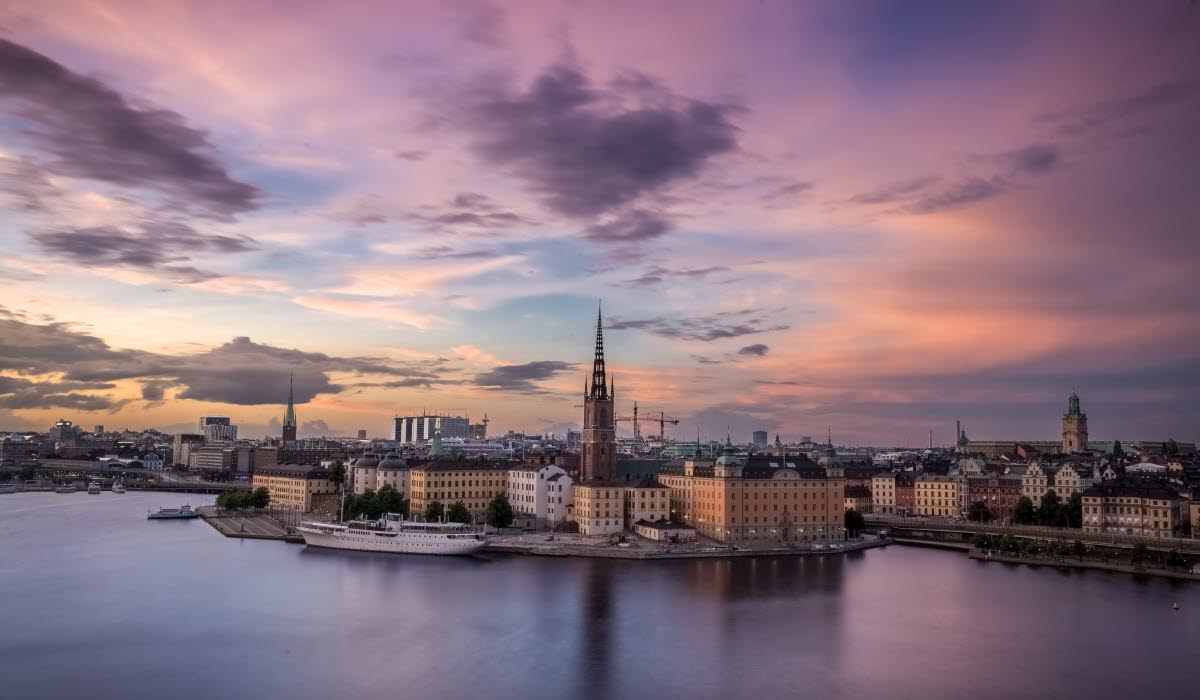India's beauty and personal care sector is growing at 11 per cent and is currently a USD 18 billion market. Global brands are making a beeline for India to take share and companies in India are taking strong positions with new products. However, given the large consumer base, there is space for growth and new brands to enter the market and tap into the growing potential. Traditionally, Swedish beauty and personal care brands have not seen India as a target market, except a few, however change is in the air and considering this vibrant country in near-term plans will reap long-term rewards.
Sustainable living, ethical conscious consumption, and tailored products are words that are becoming increasingly common in India, reflecting the changing perspectives and priorities of the population. And companies in the beauty and personal care segment are taking the lead in the consumer sector with new products, ingredients and messages, and leveraging technology and the internet to reach large audiences with remarkable success.
India is currently the fourth largest retail market globally, estimated to be worth USD 0.8 trillion and expected to reach USD 2 trillion by 2032. Consumer spending as a percentage of GDP is currently 60 per cent and is expected to increase to USD 6 trillion by 2030. Also, by 2032, major growth of nearly USD 1.2 trillion is projected to be from spends in Tier 2/ Tier 3 cities.
India – bright spot in the global slowdown
India is set to dominate the next decade with the country boasting one of the fastest growing economies and emergence as a global economic centre. With a population of 1.4 billion and a growing middle class, India presents an opportunity like no other.
By 2030, India will be home to 70+ urban centres with populations over a million and will have the world’s largest and youngest workforce where the median age will be 31. These demographic changes will drive overall retail demand.
Affluence is increasing, and the average household income is projected to increase by approximately 1.4 times between 2021 and 2031, a major factor in driving consumption.
By 2031, most consumption will shift from the those in the bottom of the pyramid to those in the middle-income section. The middle-income group is expected to account for 80 per cent of households and will be responsible for 75 per cent of consumer spending.
India’s internet penetration is set to rise to one billion, which will be more than the combined populations of Europe and North America. With the widespread availability of affordable smartphones and increasing access to high-speed internet services, millions of Indians are now connected digitally, transforming the way they communicate, access information, and engage in economic activities.
Consumer awareness and changing preferences
There has been a cultural shift towards an interest in stylised grooming and appearance, which has been attributed to increased exposure to beauty trends through social media and exposure to global beauty brands. Consumers now have a heightened expectation of the market, themselves, and the products they consume. However, consumers will not be happy with generic western products, they want products that address their specific needs and preferences, such as skincare solutions for different skin types, haircare products for diverse hair textures, and eco-friendly and cruelty-free formulations. The demand for natural and organic beauty products has also seen an upswing.
Strong influencer culture has become a powerful force in shaping consumer preferences and popular cultureSustainable production and impact are also high on the agenda for Indian beauty consumers. Concerns about the potential adverse effects of chemicals and the desire for environmentally sustainable options means products with natural ingredients, are free from harmful chemicals, and produced through ethical and sustainable practices are in demand.
This awareness is coupled with the fact that Indians are positioning themselves at the forefront of online content creation, following trends, and fostering community engagement. Strong influencer culture has become a powerful force in shaping consumer preferences and popular culture, redefining the way people perceive and engage with brands and products.
A new beauty landscape
The beauty and personal care market is expected to reach a value of USD 36 billion by 2031. In recent years, major direct to consumer (D2C) brands in this segment have taken three to four years to reach USD 12 million (equivalent to INR 100 crore) in revenue, an extremely rapid scale and pace of growth which is only set to continue.
Projections estimate that from the current value of USD 18 billion, approximately 80 per cent of the next phase of growth to USD 36 billion will largely be driven by premiumisation of products and purchases of products from new categories.
The incremental spend will be led by consumers who will continue to upgrade to branded, higher priced offerings which also have clear communication on ingredients, benefits, and sourcing etc.
Brands and marketplaces are responding to this by taking strong positions with product developments and offering experiences in both offline and online channels. While eCommerce penetration is currently only at 8 per cent, it’s the fastest growing segment and is expected to reach 15 per cent by 2030. To cater to this increasing demand, more and more brands are opening offline stores in urban centres in tier 2 and 3 cities. Brands are enhancing the customer shopping experience by leveraging technology including augmented/ virtual reality to personalise and offer trials to their target audience.
The changes in demographics, consumer behaviours, and spending patterns have been recognised as important growth drivers, and such the processes for foreign direct investment and product registrations have been simplified to enable a faster process for ease of entry into India.
Get ahead of the competition
Many Swedish beauty and personal brands are world-leading, and some are already present in India, however the potential for these, and other companies to grow market share is vast. The Swedish industry is in a strong position to capitalise on the growing demand in India by considering market entry to meet the demand for ethical and high-quality brands and products. Companies can also explore collaboration opportunities with Indian brands and partners in exchange for basic ingredients, research on new formulations, and product designs that prioritise sustainability and environmental responsibility. These partnerships and expansions represent mutual benefits for both countries.
Swedish brands should look to test the Indian market with their innovative products that address specific Indian consumer needs. By catering to the evolving preferences of Indian consumers, Swedish companies can establish a strong presence and contribute to the growth of the sector in India.
For many Swedish companies, the idea of launching in a market the size of India may seem overwhelming, but the strategy taken by the most successful companies is to start small, identify the right region, partners, and audience for your products, and then scale up once established. Local knowledge is absolutely critical in India, and our teams located in Bangalore and New Delhi can offer extensive expertise and access to key players within the beauty and personal care industry.
If India has not been on your radar yet, contact us to find out how we can help put you, and your products, on the map.
Our teams in New Delhi and Bangalore are ready to help - email us today!









